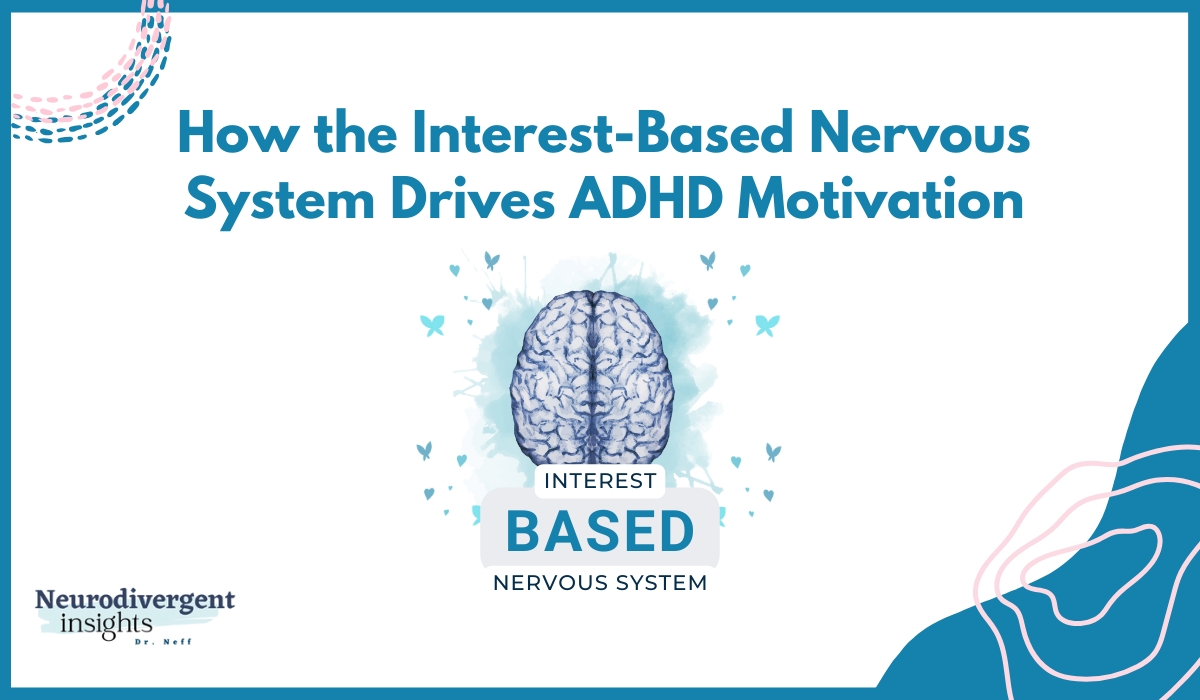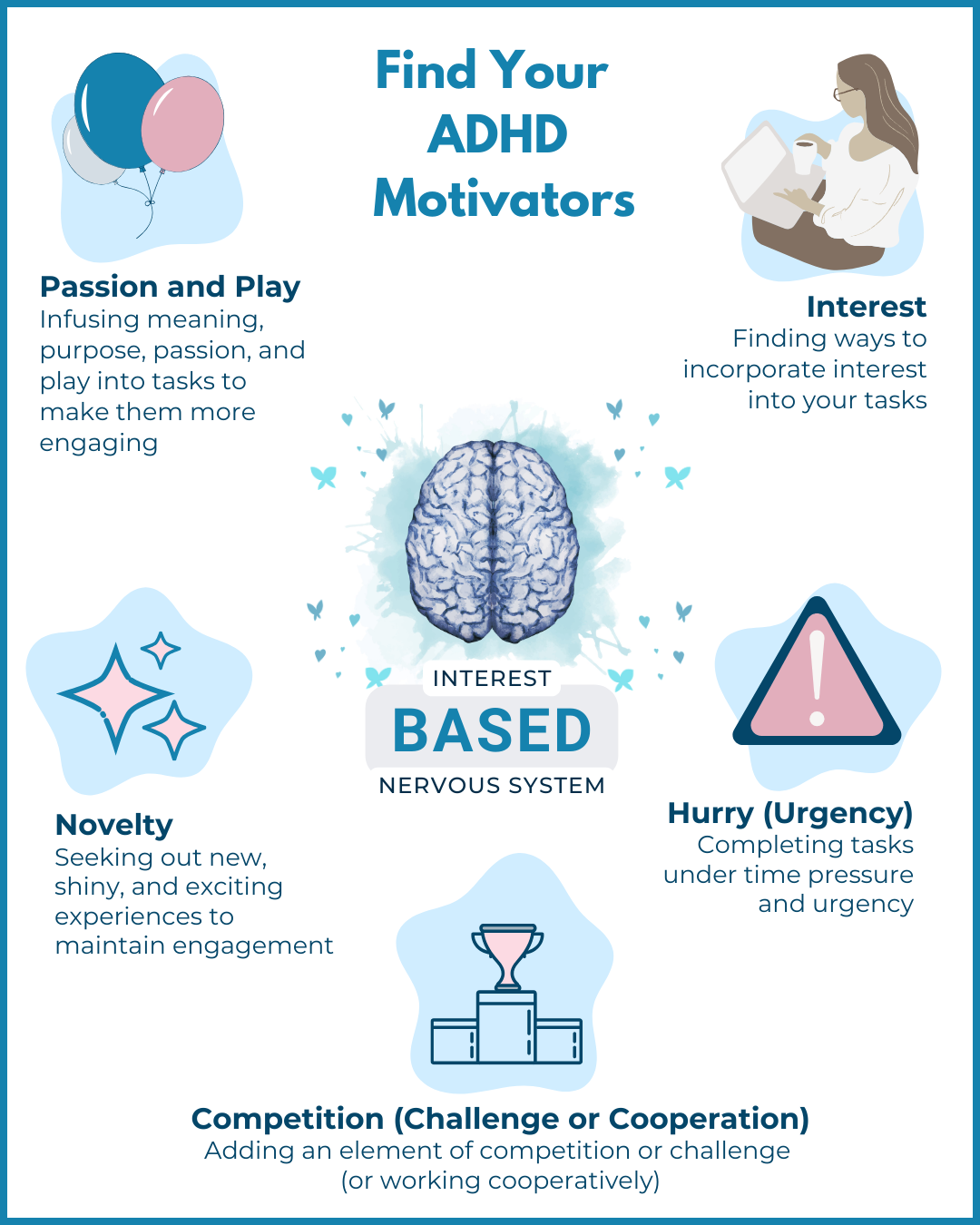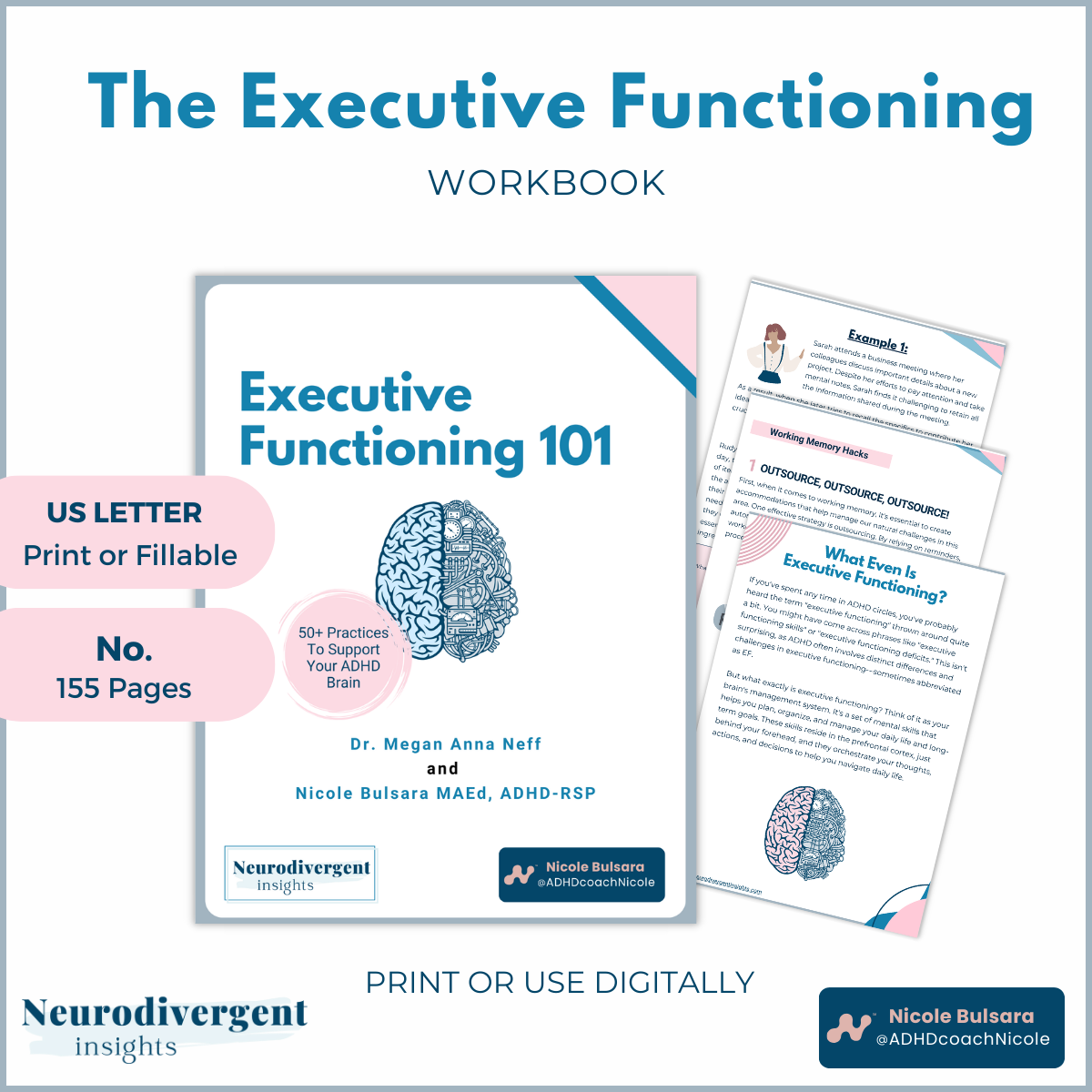How the Interest-Based Nervous System Drives ADHD Motivation
ADHD motivation can be a finicky thing. It’s a hard thing to trust. One of the reasons I fall into hyperfocus and struggle to task-switch is that I don’t believe the interest and motivation will return should I decide to leave that task! The inconsistent motivation of ADHD can make it difficult to plan and to trust ourselves. We’ll dive into all that in a minute.
In our last post, we explored the concept of the interest-based nervous system and how it differs from the more common importance-based system. If you missed it, you can catch that here. Today, we will dive deeper into the role dopamine plays in motivation and break down the core motivators that drive the ADHD brain. Understanding these motivators is key for learning how to work with our natural tendencies rather than against them.
Motivation Systems: Interest-Based vs. Importance-Based
An importance-based system prioritizes tasks based on responsibility and external pressures. People with this system are driven to complete tasks because they are significant to them personally, important to someone else (like a boss or teacher), or tied to clear rewards or consequences. For instance, tasks may be deemed important because they are:
Personally significant (Importance)
Important to someone they care about (Secondary Importance)
Tied to rewards or consequences (Rewards/Consequences)
In contrast, those with an interest-based nervous system might understand the importance of tasks but still struggle to initiate them until they become urgent. Our motivation hinges on factors like interest, novelty, play, and challenge—elements that stimulate dopamine production.
Key Motivators for the ADHD Brain
The ADHD brain thrives on several core motivators. Dr. Dodson originally coined the acronym ICNU to describe these; but it has since been popularized as PINCH, a more memorable acronym. PINCH stands for:
Passion (and Play): Engaging in activities that are enjoyable and intrinsically motivating.
Interest: Focusing on tasks that are inherently fascinating and captivating.
Novelty: Seeking out new, shiny, and exciting experiences to maintain engagement.
Competition (Cooperation or Challenge): Adding an element of competition, working cooperatively, or turning tasks into challenges to make them more engaging.
Hurry (Urgency): Completing tasks under time pressure to create a sense of urgency.
Unfortunately, many societal systems, including schools and workplaces, are structured around importance, creating a conflict for those of us with an interest-based nervous system. This misalignment often leads to tension and burnout. Let’s take a detour to understand dopamine's role in this dynamic.
Dopamine and an Interest-Based Nervous System
To understand the interest-based nervous system, it is helpful to understand the role dopamine plays in our motivation. Dopamine is a neurotransmitter that plays a key role in both our reward circuit and motivation. It motivates us to move toward things we anticipate being rewarding — so much so that when dopamine was depleted in mice, they stopped eating because they no longer found it rewarding or motivating. Dopamine is essential for normal “wanting” and motivation.
Dopamine and Motivation
The ADHD brain regulates dopamine differently than the neurotypical brain, which likely contributes to the motivation drivers of our interest-based nervous system. While the dopamine theory of ADHD is sometimes criticized for being overly simplistic, brain scan studies have uncovered differences in ADHD dopamine activity. In fact, one of the reasons stimulant medications work for ADHD is that they block dopamine reuptake, thus allowing dopamine to stay in the system longer.
For me personally, the dopamine theory has been helpful. Before understanding my ADHD, I often talked about having a “broken dopamine system.” I found myself aimlessly searching for dopamine, which I called the "dopamine scroll"—looking for chocolate or snacks, scrolling social media, or searching for dopamine in more unfortunate ways. I was looking for something to motivate me, and scratch the dopamine itch.
Dopamine drives brain activity and, like other neurotransmitters, helps neurons communicate with each other over short distances. When we have enough dopamine in our system, our brain can learn more efficiently, mobilize for action, and communicate and alert the necessary brain regions. Dopamine is like lubrication for the brain neurons; so it just makes sense to me that the ADHD interest-based nervous system depends on activities that activate dopamine to get things going! Initiating a task without the support of dopamine is like trying to start a car in the middle of winter and go from 0 to 100 at the getaway.
ADHD Motivation Is Difficult
The inconsistencies in ADHD motivation can be particularly challenging. It's the variability in our motivation that often confuses people (others and ourselves) and leads to the anguished question: "But you could do this last week, why can’t you do it today?!"
Let’s revisit the ADHD motivators to see why they can be so elusive:
Novelty
By nature, novelty and newness are time-limited. Things that are novel and new only remain novel and new for a period of time. Notice how your organizational “ADHD hack” has to keep changing to be shiny and new? Once the novelty wears off, we often need to find new “hacks” and supports. This is the reason Dr. Dodson recommends having 60-100 different techniques that can be rotated so old ones are revisited and feel new again.
Challenge
Once we have risen to a challenge and conquered it, it’s no longer challenging. Unless we build scaffolding to stretch it a bit further, the motivation around it will stop once we have completed the challenge.
Urgency
Urgency substitutes for importance. A person with ADHD cannot get engaged with a task merely because it is important. As Dr. Dodson notes, sometimes a person will create crises and chaos because they have found that helps them get engaged and get things done. This pattern of creating chaos to motivate can be mistaken for Borderline Personality Disorder.
Interest and Passion
Passions and interests can spark and fade quickly for ADHDers, but can be more enduring for ADHDers who also have the autism sidekick. This is why I often say I have empathy for ADHDers who haven’t been gifted with the autism bonus pack. For ADHDers, interests and passions can rotate quickly—today it’s knitting, tomorrow it’s learning the ukulele. For AuDHDers, we often have some enduring interests and passions that can help weave our attention together (although we still need to get creative with harnessing those passions).
Because these motivators can be fickle little things; our attention, focus, and engagement can often feel unpredictable. This is one of the enduring frustrations for many people with ADHD (and those in our lives who are also impacted by these inconsistencies). The more we try to fit into an importance-based system, the more strain, burnout, and inconsistency we may experience, which is why it is important to learn how to work with the system we have rather than trying to fit into a system that doesn’t align with us.
Conclusion
Next week’s post will focus on how to work with our interest-based system to align with our motivators more effectively. By aligning our activities with our natural motivational pulls and forces, we can reduce burnout and increase our sense of agency.
Citations
Bromberg-Martin, E. S., Matsumoto, M., & Hikosaka, O. (2010). Dopamine in motivational control: rewarding, aversive, and alerting. Neuron, 68(5), 815–834. https://doi.org/10.1016/j.neuron.2010.11.022
Szczypka, M. S., Rainey, M. A., Kim, D. S., Alaynick, W. A., Marck, B. T., Matsumoto, A. M., & Palmiter, R. D. (1999). Feeding behavior in dopamine-deficient mice. Proceedings of the National Academy of Sciences of the United States of America, 96(21), 12138–12143. https://doi.org/10.1073/pnas.96.21.12138
Dr. William Dodson, HOW ADHD SHAPES YOUR PERCEPTIONS, EMOTIONS & MOTIVATION, Presentation. Retrieved from: https://adhd.dk/wp-content/uploads/sites/2/2022/05/Dodson-How-ADHD-Shapes-Your-Perceptions-Emotions-.pdf







